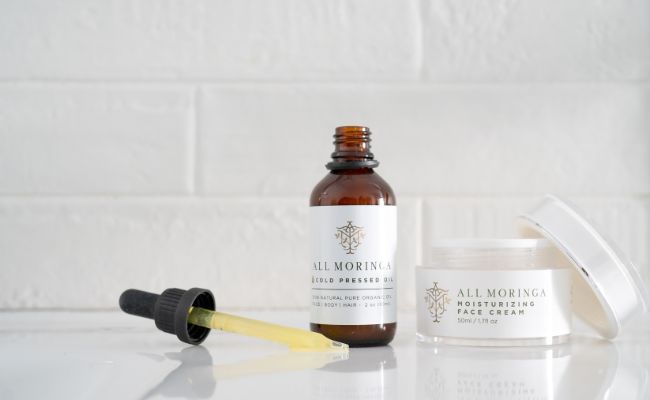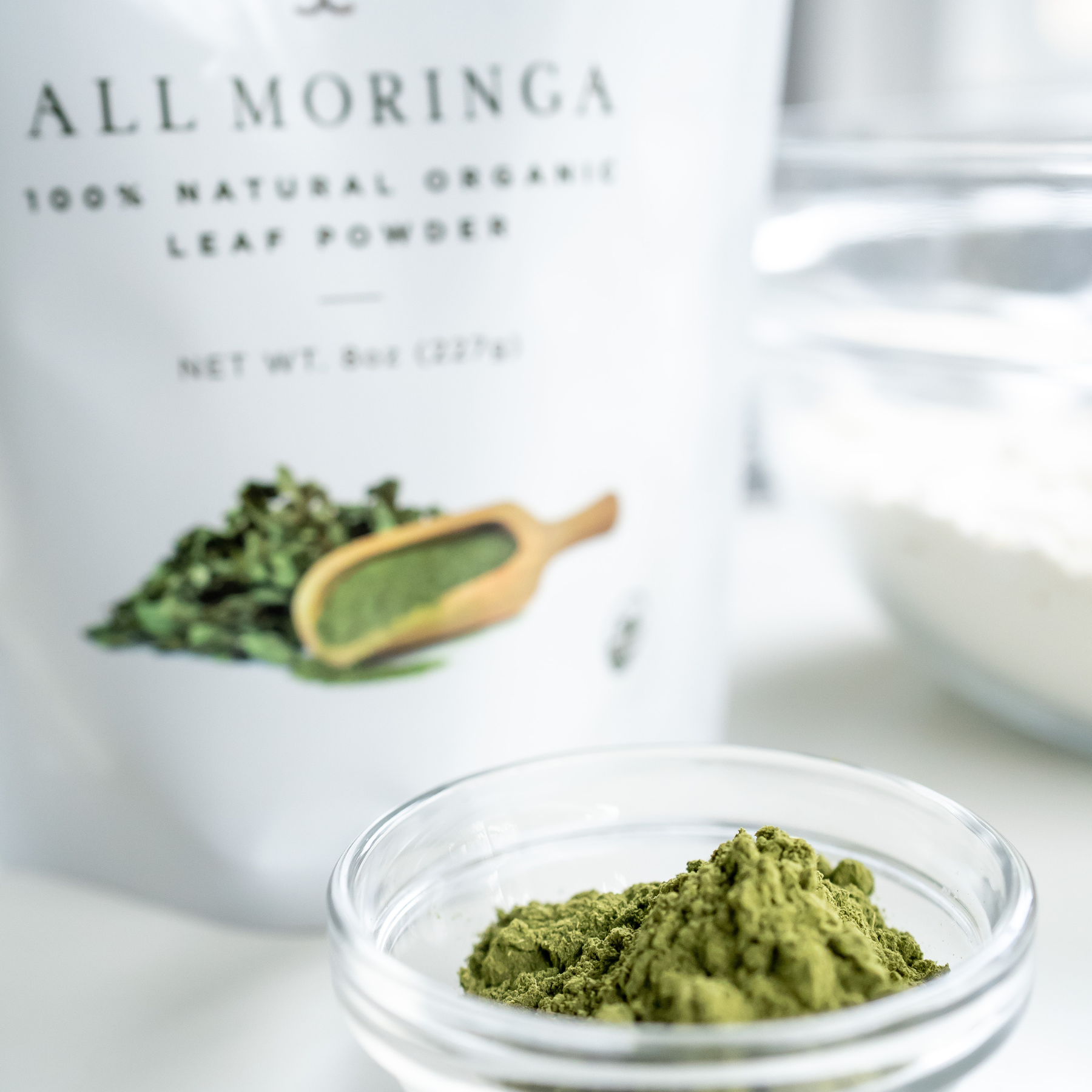Discover How to Grow Lush Moringa Plants Indoors and Outdoors Easily!

What Are The Benefits Of Growing Moringa In My Backyard?
All of us know at least one person who is considering or even actively "prepping". They are the friends or relations convinced they should prepare for some sort of catastrophe. Whether it is the end of civilization as we know it or just a major storm or natural disaster, they have water and food supplies, all kinds of emergency gear, and just about anything else you can imagine in their yard, basement or garage. The next time you see them, you might also want to ask them if they are growing a Moringa tree.
Why?
The Moringa Keeps your Body nutrients level High in a time of Emergency when it's hard to get all your necessary vitamins because you can't shop or get even a loaf of bread.
As you might already know Moringa is revered in many areas of the world for its amazing nutrient density and enormous list of benefits. Not only is it seen as a superfood, but its leaves, seeds, barks, and roots can all be used to create everything from therapeutic oils for acne or arthritis to supplements that can help you with diabetes, low energy, and malnutrition. So, there are many benefits to cultivating Moringa in your yard or garden. Let's look at the most common questions related to that subject:
Can I Grow Organic Moringa in My Backyard? It really depends on where you live. The trees can survive temperatures as low as 48 degrees Fahrenheit in the shade, and even a light frost. However, you can also grow them in patio pots (with wheels) and bring them indoors (if you have a sunny spot for the winter months - and a large enough space). In the United States, it is zones 8-10 that can grow them outdoors - all others require pots.

What Do I Need to Start Growing Moringa?
To begin, choose a spot that is sunny and gets six good hours of sunlight each day. Try to keep the tree out of the wind, if possible. The soil has to be very deep and well drained. Enrich with organic matter for best results. You also need to be able to water it easily when it is first growing, but once established, they can withstand dry periods. You will need to water if extremely dry.
Can Moringa be Grown from Cuttings or Seeds?
Both! A sturdy plant, Moringa is able to be grown from seeds or branch cuttings. If you are planting seeds, be sure you obtain them from Moringa Oleifera as this is the top choice for both growing and using for therapeutic and nutritional purposes.

How to germinate a moringa seed?
Geminating Moringa seeds is a simple and straightforward process. First, you need to acquire the necessary materials for the job. This includes a container such as a pot or tray, potting soil, a watering can, and of course, moringa seeds. It is important to select a well-drained soil that is specifically designed for germination purposes as it will provide optimal moisture and nutrients to the seeds.
Once you have all of your supplies ready, you can begin the gemination process by preparing your potting mix. Fill your pot or tray with at least 3 inches of soil and make sure it's evenly spread. Moisten the soil with water until it's damp but not wet so it doesn't become soggy.
Next, press gently and create 1 inch hole with your finger, drop one moringa seeds into each hole. Cover them up with some more soil, making sure they are completely covered up so no light gets through. Finally, spray some more water over the top of the seed bed to help keep it moist but don't overwater as this may cause them to rot instead of germinating correctly. Keep your pot/trey in a place with no direct sun and check for signs of sprouting (takes about 7-14 day): look closely at the surface of the soil for little green shoots emerging from beneath and make sure there's enough moisture present that they don't dry out between sprays.
How to plant your Moringa seedling?
Now that your Moringa seeds are geminated and ready for planting, make sure to position it in an area where it will receive plenty of sunlight throughout the day but won't be exposed to any heavy wind or cold temperatures at night. Before you plant your Moringa seedling, make sure that the soil is well-drained and enriched with plenty of organic matter. Dig a hole twice as deep as the root ball of your Moringa seedling, and mix in some compost or aged manure if necessary. Place the seedling in the hole so that it stands up straight and fill in with fresh soil. Firmly press down around the plant to secure it in place. Make sure to water deeply at least once a week until roots are established.
If you want to geminate your Moringa seeds indoors during winter months when there is less natural sunlight available, consider investing in some grow lights to ensure they get enough energy throughout their germination period - this should significantly boost their growth rate as well! If done properly and with enough patience, geminating moringa seeds should take anywhere from 10 days to several weeks depending on factors such as temperature, humidity levels and how much direct sunlight they receive each day.
How to grow a Moringa tree from cuttings?
Moringa cuttings are pieces of Moringa tree branches, snapped off at the stem or branch and dipped in rooting hormone to promote root growth. They can be planted directly into soil, and if taken care of properly, they will produce new roots and become full-fledged trees in a few weeks' time. Cuttings from healthy moringa trees are most likely to take root faster than those from unhealthy ones. They can also be used for propagation purposes where multiple copies of the same tree's genetics may be obtained.
When you are growing a Moringa tree from cuttings, it is important to get the right kind of cutting. You will need to take them from hardwood (not green) branches that are around three feet long and one inch around. Dig a three-foot by three-foot hole that is also three feet deep, then fill it with a mixture of soil and sand and pack it in around the base. Make sure to water regularly to help establish roots, then once you notice the leaves beginning to form, finish filling the hole with a good soil.
Once the tree has had time to take root in its new home, you can begin fertilizing it every two weeks during its growing season for optimal growth. The Moringa tree requires lots of sunlight so position your tree in an area that gets plenty of direct sun throughout the day. It’s also important that the soil is well draining, so avoid planting in areas with standing water or overly saturated soil.
It’s best to keep the area where you planted your Moringa tree clear of weeds and grass as they will outcompete your tree for nutrients and moisture in the soil. Pruning is also necessary to ensure proper growth - remove any dead or diseased branches off your trees when needed as well as any competing branches which could potentially shade out other parts of your trees. Regular pruning will help promote better air circulation too! Finally, be sure to watch out for pests or diseases that could affect your tree's health, if any do arise take steps to address this quickly. With these tips and regular care, you should have no problem successfully growing a Moringa tree from cuttings!
How Long Does It Take to Grow Moringa Tree?
The trees grow very quickly and can bloom in as little as eight months. As one expert says, "During its first year, a Moringa tree will grow up to five meters in height and produce flowers and fruit."
How Big the Moringa Tree can grow?
If you do not prune or trim it, it can grow up to 12 meters in total height. It can yield more than 600 pods each year, but mature trees often give far more than that. Some expert growers use methods to keep the trees as bushes in order to maximize their leaf and pod crops.
how to harvest your Moringa tree?
Harvesting you own nutrient-packed Moringa leaves from your tree is an effortless procedure. Here are a few simple steps to follow:
- For any Moringa tree variety to reach its full potential, allow it 6-12 months of time in the soil before harvesting. The growing conditions play an important role and can affect maturity levels; however, you'll be able to enjoy your own homegrown moringa bounty within a year's span!
- To ensure healthy growth and abundant leaf production, be sure to prune your tree before harvesting its leaves. Snip off any dead or damaged branches so that the rest of the foliage can flourish!
- Pluck the moringa leaves for optimal nutrition. They are usually situated at the end of branches and have a vivid, green hue when in their most tender state. Whenever you harvest them, young moringa leaves will provide maximum benefits to your health.
- Reap the leaves with a pair of sharp scissors or pruners. Make sure you leave several leaves on each branch to encourage strong, continuous growth.
- Make sure to erase any dirt or debris by rinsing the leaves completely.
- If you intend to use the leaves as a powder, spread them out in a shaded area or put them in a dehydrator. If you'd prefer fresh leaves, store them inside your refrigerator for up to several days. Whatever method of drying that suits your needs best - just be sure to remove all moisture from the foliage!
It is essential to keep in mind that it isn't advisable to harvest all of the leaves from one Moringa tree; rather, only pick the topmost ones for continued growth and leaf production.
Where does Moringa Oleifera grow natively?
It is a native of India, Asia, and Africa, and it is acclimated to very warm and bright conditions. However, even people in northern climates can grow this amazing plant.

| PARAMETER | REQUIREMENT |
| CLIMATE | Tropical or subtropical |
| ALTITUDE | 0 – 2000 M / 0 - 6561 fT |
| RAINFALL | 250 – 3000MM / 9 - 118 iNCH Irrigation needed for leaf production if rainfall <800 MM / <31 iNCH |
| SOIL TYPE | Loamy, Sandy, or Sandy-Loam |
| SOIL PH | Moringa is quite adaptable and can tolerate a wide range of soil conditions, but for optimal growth, sticking to the preferred 6.0 and 7.5 pH is beneficial |
So, that prepper friend eager to have a good source of nutrition and medicine may want to consider adding a potted Moringa tree or two, or more, to their array of "must-have" items, since this is a remarkable plant beneficial to everyone.
Finally, the most important 3 roles to grow a Moringa tree outdoor:
1. A lot of sunshine
2. Little water
3. Well-drained soil
How to grow a Moringa plant indoors?
First we need to find out if Is it possible to cultivate moringa plants indoors, using light sources?
Moringa oleifera is a tropical species that thrives in the warmth and sunshine of its native habitat. Cultivating this plant inside can be done, however it does require some extra effort to create an environment conducive to their growth and health.
If you are determined to cultivate Moringa indoors, a warm and sunny location with well-draining soil is essential. You must also guarantee the plant receives ample illumination either from direct sunlight or artificial grow lights for best results.
To ensure optimum growth, you should position your Moringa plant near a south-facing window or under an efficient grow light. This species of flower needs copious amounts of illumination to thrive and sprout leaves—so much so that it may require between 12-16 hours of daylight daily!
Watering your Moringa plant regularly and ensuring the soil has a balanced consistency are both paramount steps in growing this herb indoors. It is also essential to meet its needs for temperature and humidity, as these factors can greatly influence growth. Be aware that cultivating Moringa indoors can sometimes be more of an uphill battle than outdoors, but with devoted attention, it's possible! Utilizing lighting technology may assist you in successfully producing yield not unlike what could be achieved outside - if all other requirements are met accordingly.
When it comes to growing Moringa indoors, what type of artificial grow light should I invest in for optimal results?
Growing Moringa indoors requires selecting the proper type of light to guarantee that your plant obtains both the correct amount and spectrum for stellar growth. By taking this step, you can ensure that your Moringa receives all it needs in order to thrive.
High-intensity discharge (HID) lamps, like metal halide (MH) and high-pressure sodium (HPS), are popularly used for indoor gardening. Their wide spectrum of light offers intense illumination that actively helps in promoting the growth of Moringa plants. Though powerful, they consume a good deal of energy and generate heat - something you do not want when cultivating Moringa within limited spaces!
If you're looking for an energy-efficient way to grow Moringa indoors that takes up less space, T5 and T8 fluorescent tubes are a great choice. While they offer excellent light coverage, it's important to keep in mind that these lights may not be intense enough for optimal growth compared to HID lamps.
If you're looking to grow Moringa indoors, LED grow lights are the optimal choice. Not only do they conserve energy and create less heat than other options, but also provide a complete spectrum of light that can be adjusted for your plant's specific needs. You'll have plenty of choices too when it comes to selecting an intensity level - whatever stage the plant is in, there's a perfect light strength available with LED bulbs!
Ultimately, when deciding which grow light is best for your Moringa plants, you will need to consider the size of your indoor growing space and their individual requirements. To ensure that you make the right decision it's highly recommended that you conduct some research on all available options before making a purchase and seek advice from an expert if needed.
What kind of LED light do I need to grow moringa tree indoor?
For fruitful indoor Moringa growth, pick LED lights that contain the full spectrum of hues including red, blue and green. This blend of colors provides the required balance for authentic cultivation results. To imitate natural sunlight it is best to select a LED grow light with a color temperature around 6500K - this particular level stimulates optimal vegetative expansion in your plants!
To successfully cultivate Moringa indoors, the intensity of light is essential. As Moringa plants require high illumination levels, you should select an LED grow light with a substantial PAR (Photosynthetically Active Radiation) output rate at around 100-150 micromoles per square meter per second for optimum growth.
Picking an LED grow light that is energy-efficient and produces minimal heat is essential for producing a successful Moringa crop. It's paramount to research various brands thoroughly before making your decision, so you can be certain it matches your exact requirements and the size of the growing area. Some well-liked options are Heliospectra, Gavita, or Viparspectra - all reliable choices in indoor gardening.
What is the ideal temperature and humidity for moringa to grow indoors?
For the healthiest Moringa indoors, aim for a temperature range of 60-90°F (16-32°C). Keep in mind that this is a tropical plant and thrives best with warmer temperatures. But be sure not to exceed those figures; excessively warm conditions can cause foliage wilting and stress the plants.
When it comes to Moringa, the optimum humidity level should be between 50-70%. Although this plant can generally survive in a range of humidities, an environment that is too dry may cause its leaves to become chapped and brittle. Meanwhile, overly damp conditions are unsafe for your Moringa as they could prompt fungal growth which could lead to severe damage.
Ensure the growing area's temperature and humidity is optimized for your Moringa plant's health by monitoring it regularly. For a precise reading, use a hygrometer to keep tabs on humidity while an accurate thermometer tracks temperatures. If desired, modify these levels further with either a humidifier or dehumidifier to guarantee ideal conditions.
It is critical to ensure that the Moringa plant's growing space has good air circulation. To guarantee an optimal environment for your plant, you may want to consider installing a fan in order to promote airflow and ventilation around it. This can make all the difference when it comes to successful growth!
What kind of LED light do I need to grow moringa tree indoor?
For fruitful indoor Moringa growth, pick LED lights that contain the full spectrum of hues including red, blue and green. This blend of colors provides the required balance for authentic cultivation results. To imitate natural sunlight it is best to select a LED grow light with a color temperature around 6500K - this particular level stimulates optimal vegetative expansion in your plants!
To successfully cultivate Moringa indoors, the intensity of light is essential. As Moringa plants require high illumination levels, you should select an LED grow light with a substantial PAR (Photosynthetically Active Radiation) output rate at around 100-150 micromoles per square meter per second for optimum growth.
Picking an LED grow light that is energy-efficient and produces minimal heat is essential for producing a successful Moringa crop. It's paramount to research various brands thoroughly before making your decision, so you can be certain it matches your exact requirements and the size of the growing area. Some well-liked options are Heliospectra, Gavita, or Viparspectra - all reliable choices in indoor gardening.
How frequently should I ensure my indoor Moringa Plant is hydrated?
In order to ensure your indoor Moringa plant is thriving, there are certain factors you should take into account when deciding how often to water it. These include the size of the pot, the temperature and humidity levels in its environment. Checking soil moisture regularly rather than strictly adhering to a schedule will help you determine when watering is necessary - once an inch of topsoil has dried out, implement hydration until all areas of soil are evenly moist yet not overly saturated with liquid. If neglected too long periods without irrigation can cause leaves to turn yellow and stunt growth development; thereby making regularity key for keeping your plant healthy!
It is highly significant to remember that waterlogging does not bode well for Moringa; therefore, it's imperative to keep the drainage holes in your pot free of blockage and add a tray beneath the pot to collect surplus moisture.
Thank you for reading! Let us know if you have any questions.








2 comments
Thanks for writing such a complete, cogent paper. It was easy to read and consume.
Jan Watling
Great information on your website but I live in Virginia it’s right on the cusp of bring it in for the winter or leave it out we usually don’t get below 45° but it is doing so well I don’t want to lose it it’s probably about 4 1/2 5 feet high now can you give me any advice
Susan jeffries
Leave a comment
This site is protected by reCAPTCHA and the Google Privacy Policy and Terms of Service apply.